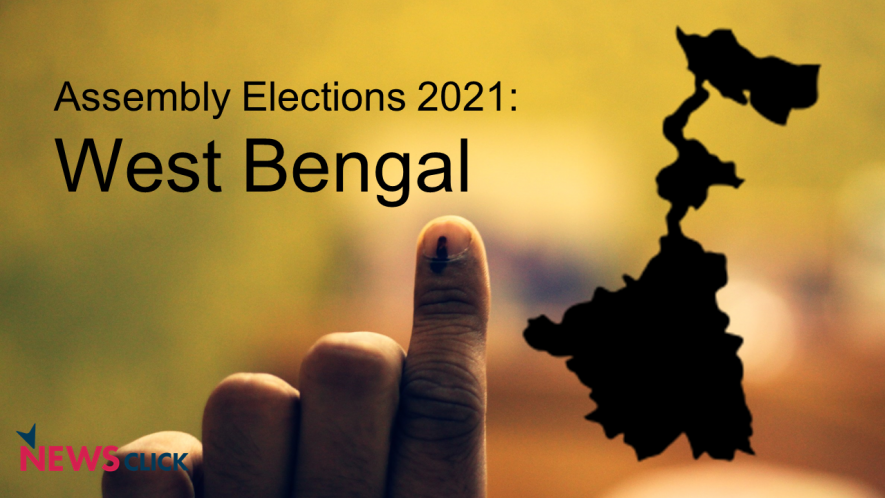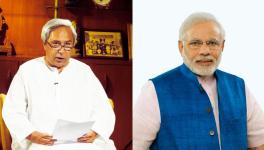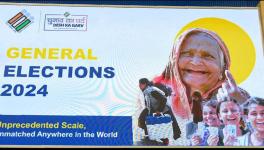One Oversight Too Many: BJP’s Polarisation Pitch Won’t Help it in Bengal

Over the long term, the Bharatiya Janata Party’s (BJP’s) current stint in government is cause for concern on several counts. It is about a majoritarian and obscurantist ideology, which has led it to institute, assist or condone attacks on minorities and marginalised groups. With its authoritarian and anti-democratic reflex, it is out to destroy institutions, subvert constitutional conventions and target dissenting voices. Worldwide, India is being reviled and bracketed with “elected autocracies”.
At a more immediate level, another defining characteristic is indelibly etching itself into the record of the current regime—and that is sheer incompetence, that has turned government and public life into a toxic circus. This was underlined yet again by the handling of the issue of small savings last week.
On 31 March, the Union government announced swingeing interest-rate cuts on a number of savings schemes, mostly affecting small savers, including the Public Provident Fund (PPF), time deposits, postal savings deposits, the National Savings Certificate (NSC), Senior Citizens Savings Scheme (SCSS) and Sukanya Samriddhi.
The cuts ranged from 40 to 110 basis points, which meant, for instance, that the PPF interest rate was down from 7.10 to 6.40%, the lowest in 46 years; NSC returns were down from 6.80 to 5.90%; SCSS down from 7.40 to 6.50% and five-year fixed deposit rates down from 6.70% to 5.80%.
Some “experts” have defended the cuts on various grounds. We will not get into technical points, except to note that the inflation rate has powered over 5% and is sticking, driven largely by unreal fuel prices. Petrol costs anywhere between Rs. 90 and Rs. 97 in the four metros and diesel between Rs. 81 and 88. Fuel prices have skyrocketed because the current regime jacked-up central levies on fuel prices when global prices fell rapidly in 2016. It later bottomed out in 2020 when the Covid-19 pandemic hit.
The regime was trying to make a windfall buck but resisted cutting levies when prices started rising at the end of 2020 and in 2021 when global fuel prices started kicking back. The result as we have seen is high inflation. Food inflation, which had hit over 9% last year during the pandemic had eased to below 2%. Last month it was near 4%, with economists looking at a steep rise in the coming months.
In this context, it is worth remembering that the cuts in interest rates are going to hit the middle class, especially pensioners and senior citizens. This realisation struck Union Finance Minister Nirmala Sitharaman somewhat belatedly, as did the fact that state elections were in the works in five states. The most crucial of these for the BJP are in West Bengal and Assam.
This late flicker of the light bulb caused Sitharaman to retract the cuts on 1 April. About an hour before the second phase of polling started in Bengal and Assam, she tweeted the decision to retore the status quo, saying the circular announcing the cut had been issued “by oversight”.
No explanation was offered in respect of how this oversight happened. This is what we mean by monumental incompetence. The BJP is in the middle of what the fawning media calls an epic electoral contest (which the party does not have a prayer of winning) in Bengal, and what does it do? Cut interest rates on small savings without realising what on earth it’s doing.
Let us cut to Bengal. Those who run the Finance Ministry—possibly ensconced in the Prime Minister’s Office (PMO), which in effect runs all the “sensitive” ministries—did not even realise that Bengal contributes the highest share to the nation’s small savings corpus. In the 2016-17 and 2017-18 financial years, Bengal topped the state-wise list in terms of gross savings at 14.32 and 15.09% of the nationwide corpus. This is part of a secular trend.
The problem for the BJP is that while Sitharaman, and finance ministry and PMO mandarins are bungling, it is unlikely that largely middle-class people affected by the now withdrawn rate cuts are complete fools, especially when it comes to self-interest.
Religion has not been a basis for electoral and political mobilisation in Bengal since Independence. The BJP’s rise over the past few years has exposed fault lines to be sure. But it seems unlikely that the polarisation ploy will work wonders when pitted against the domestic budgetary considerations of the already struggling middle class.
Everyone with a quarter of a brain knows that the regime will likely reinstate the rate cuts as soon as the elections are over. Alongside inadequacy, cynicism and manipulation are two strong suits of this regime.
People will be all the more sceptical about the motives of the current regime given the context. A report published by the Washington-based Pew Research Center says that the Indian middle class has shrunk by 32 million in 2020, which accounts for 60% of the global contraction of the middle-income group, defined as those who earn $10.01-20 (roughly Rs. 725-1,450) a day.
This means that the number of people in the middle class will have fallen to two-thirds of the pre-pandemic projection of 99 million people.
At the same time, the number of poor people, defined as those earning $2 or less (roughly Rs. 145 or less) a day has increased by 75 million, again accounting for 60% of the global rise in poverty.
The total number of poor people is expected to clock in at 134 million, more than double the pre-pandemic estimate of 59 million, at a poverty rate of 9.7%, as against the January 2020 forecast of 4.3%.
This means that those in the low-income tier, earning $2.01-10 (roughly Rs. 145-725) a day will fall from the expected 1.20 billion to 1.16 billion. It should be a sobering thought for the commentariat that while 95% of India’s population consists of people who are either in a low-income trap or are poor, the regime has resisted any serious attempt to alleviate distress.
Much is being written and said about the anti-incumbency sentiment that Bengal’s ruling party, the Trinamool Congress, is facing. While there is clearly a groundswell against it, not least because of corruption at the grassroots level, this is not to say that there is no anti-incumbency sentiment against the BJP.
It has been said that ordinary people do not read reports put out by Pew Research or keep track of the Global Hunger Index, which ranks India at 94 in a list of 107 countries, behind, for instance, neighbours Bangladesh, Nepal, Pakistan, and Sri Lanka. Perhaps. But those going hungry or facing catastrophic drops in incomes and entitlements are actually experiencing the phenomena reported by national and international agencies. They know the score without the help of reports.
Most of these people know that it is the regime in Delhi that is responsible for their miseries—the migrants who were treated as somehow less than human by Prime Minister Narendra Modi a year ago and citizens who are having to shell out a third more for their LPG cylinders than they were paying a few months ago.
Push comes to shove, Bengal Chief Minister Mamata Banerjee can point to the many schemes her government has rolled out, which is not to downplay the importance of corrupt and partisan practices that have bedevilled them. But what really can the BJP offer: the rhetoric of division and polarisation? And more of the same. It is not likely to cut the mustard.
The author is an independent journalist and researcher. The views are personal.
Get the latest reports & analysis with people's perspective on Protests, movements & deep analytical videos, discussions of the current affairs in your Telegram app. Subscribe to NewsClick's Telegram channel & get Real-Time updates on stories, as they get published on our website.























